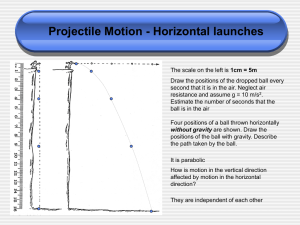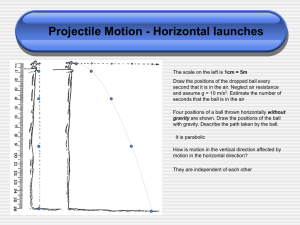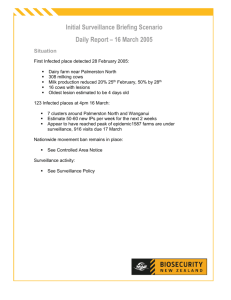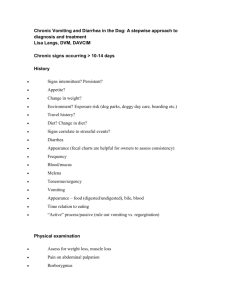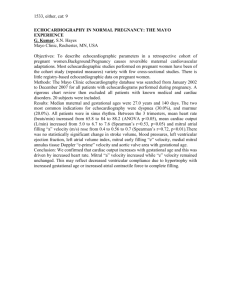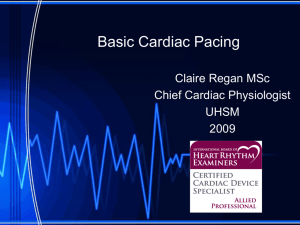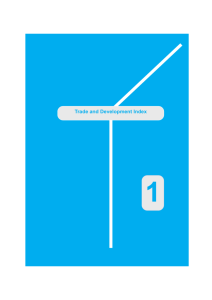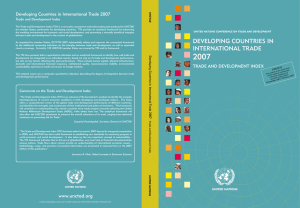echocardiographic detection of cardiac allograft
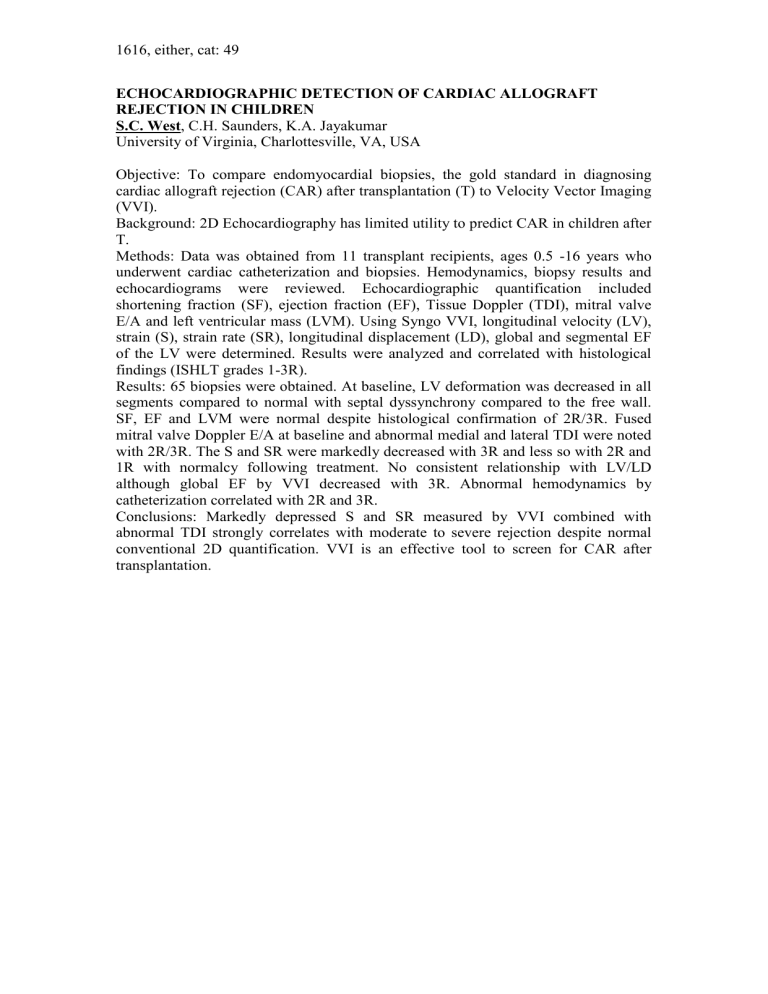
1616, either, cat: 49
ECHOCARDIOGRAPHIC DETECTION OF CARDIAC ALLOGRAFT
REJECTION IN CHILDREN
S.C. West , C.H. Saunders, K.A. Jayakumar
University of Virginia, Charlottesville, VA, USA
Objective: To compare endomyocardial biopsies, the gold standard in diagnosing cardiac allograft rejection (CAR) after transplantation (T) to Velocity Vector Imaging
(VVI).
Background: 2D Echocardiography has limited utility to predict CAR in children after
T.
Methods: Data was obtained from 11 transplant recipients, ages 0.5 -16 years who underwent cardiac catheterization and biopsies. Hemodynamics, biopsy results and echocardiograms were reviewed. Echocardiographic quantification included shortening fraction (SF), ejection fraction (EF), Tissue Doppler (TDI), mitral valve
E/A and left ventricular mass (LVM). Using Syngo VVI, longitudinal velocity (LV), strain (S), strain rate (SR), longitudinal displacement (LD), global and segmental EF of the LV were determined. Results were analyzed and correlated with histological findings (ISHLT grades 1-3R).
Results: 65 biopsies were obtained. At baseline, LV deformation was decreased in all segments compared to normal with septal dyssynchrony compared to the free wall.
SF, EF and LVM were normal despite histological confirmation of 2R/3R. Fused mitral valve Doppler E/A at baseline and abnormal medial and lateral TDI were noted with 2R/3R. The S and SR were markedly decreased with 3R and less so with 2R and
1R with normalcy following treatment. No consistent relationship with LV/LD although global EF by VVI decreased with 3R. Abnormal hemodynamics by catheterization correlated with 2R and 3R.
Conclusions: Markedly depressed S and SR measured by VVI combined with abnormal TDI strongly correlates with moderate to severe rejection despite normal conventional 2D quantification. VVI is an effective tool to screen for CAR after transplantation.
